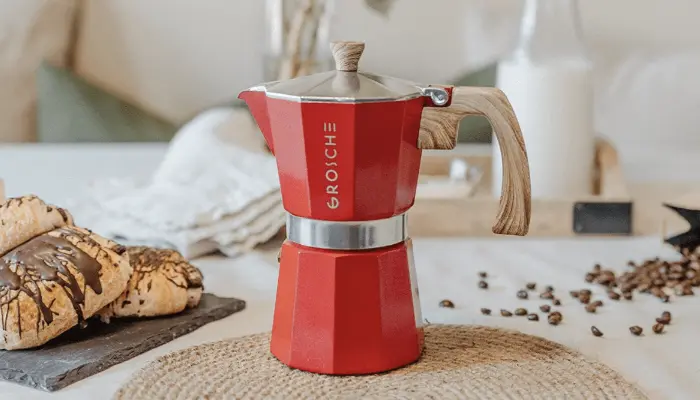Espresso is a concentrated coffee beverage brewed by forcing hot water through finely-ground coffee beans. The process is quick but requires precision. One of the most common questions among baristas and coffee enthusiasts is: How long should it take to make espresso? The answer depends on several factors, including grind size, coffee dose, water temperature, and machine pressure. In this article, we will explore the ideal extraction time for espresso, the factors affecting it, and how to adjust your technique for the best results.
The Ideal Espresso Extraction Time
The standard extraction time for a well-balanced espresso shot is 25 to 30 seconds. This duration allows for proper flavor extraction without over- or under-extraction.
Under 20 seconds: The shot will likely be weak, sour, or acidic due to insufficient extraction.
Over 30 seconds: The shot may taste bitter, burnt, or overly strong because of over-extraction.
This 25-30 second window is a guideline, not a strict rule. Some blends or preferences may require slight adjustments.
Why Does Extraction Time Matter?
Extraction time directly impacts flavor. When water passes through coffee grounds, it dissolves various compounds:
First: Acids and bright flavors (quick to extract).
Next: Sweetness and balanced notes.
Last: Bitter and astringent compounds (slow to extract).
A well-timed shot ensures a harmonious balance of these flavors.
Factors Affecting Espresso Extraction Time
Several variables influence how long espresso takes to brew. Understanding these helps in troubleshooting and perfecting your shot.
Grind Size
Grind size is the most critical factor.
Finer grind: Slows water flow, increasing extraction time.
Coarser grind: Speeds up water flow, reducing extraction time.
If your shot runs too fast, grind finer. If it’s too slow, grind coarser.
Coffee Dose
The amount of coffee used affects resistance.
Higher dose: More resistance, longer extraction.
Lower dose: Less resistance, faster extraction.
A typical double shot uses 18-20 grams of coffee. Adjusting the dose can fine-tune extraction time.
Tamping Pressure
Tamping compresses the coffee puck, creating resistance.
Firm tamp (30 lbs of pressure): Ensures even extraction.
Lighter tamp: Water flows faster, shortening extraction.
Consistent tamping is key to repeatable results.
Water Temperature
Hotter water extracts faster.
Ideal range: 195°F to 205°F (90°C to 96°C).
Too hot: Over-extraction, bitter taste.
Too cool: Under-extraction, sour taste.
Machine Pressure
Espresso machines use 9 bars of pressure (130 psi) as the standard.
Higher pressure: Faster extraction, risk of channeling.
Lower pressure: Slower extraction, weaker flavor.
Coffee Freshness and Roast Level
Fresh beans: Release CO₂, leading to faster flow.
Older beans: Extract more slowly.
Dark roasts: Extract faster due to porous structure.
Light roasts: Require finer grinds and longer extractions.
Step-by-Step Guide to Dialing In Espresso
Dialing in means adjusting variables to achieve the perfect shot. Here’s how:
Start with the Right Dose
Use 18-20g for a double shot. Keep this consistent while adjusting other factors.
Set the Grind Size
Begin with a medium-fine grind. If the shot runs:
Too fast (under 20 sec): Grind finer.
Too slow (over 30 sec): Grind coarser.
Tamp Evenly
Apply firm, even pressure to prevent channeling (water bypassing coffee).
Time the Shot
Start timing when water hits the coffee. Stop when the desired yield is reached (usually 1:2 ratio—e.g., 18g in, 36g out).
Taste and Adjust
Sour: Increase extraction time (finer grind, higher dose).
Bitter: Decrease extraction time (coarser grind, lower dose).
Common Espresso Extraction Problems
Shot Runs Too Fast
Causes:
- Grind too coarse.
- Dose too low.
- Tamping too light.
Fix:
Adjust grind, dose, or tamping pressure.
Shot Runs Too Slow
Causes:
- Grind too fine.
- Dose too high.
- Coffee too fresh (degassing).
Fix:
Coarsen grind, reduce dose, or let beans rest.
Channeling
Cause: Uneven tamping or grind distribution.
Fix: Use a distribution tool and tamp evenly.
Advanced Techniques for Precision
Pre-infusion
Some machines pre-wet the grounds at low pressure before full extraction. This helps:
- Reduce channeling.
- Promote even extraction.
Pressure Profiling
Advanced machines allow adjusting pressure during extraction. This can enhance sweetness or acidity.
Flow Control
Regulating water flow can fine-tune extraction for unique flavor profiles.
Conclusion
The ideal espresso extraction time is 25-30 seconds, but this depends on grind size, dose, tamping, and machine settings. By understanding these variables, you can consistently pull great shots.
Experimentation is key—adjust one factor at a time and taste the results. With practice, you’ll master the art of espresso extraction. Now, go brew your perfect shot!
Related topics:
Where to Buy Stovetop Espresso Maker
How Many Ounces of Espresso Beans in a Shot?


